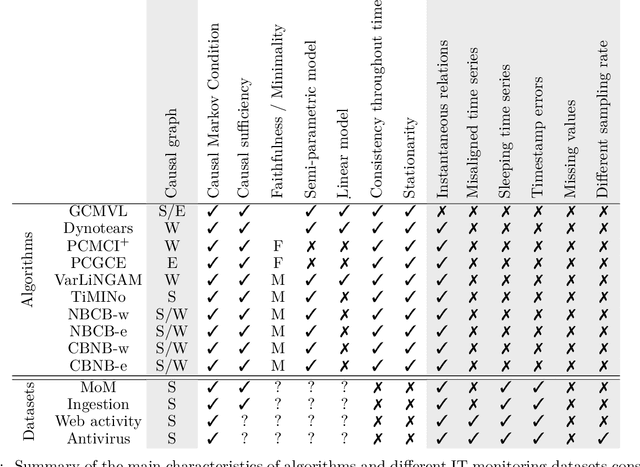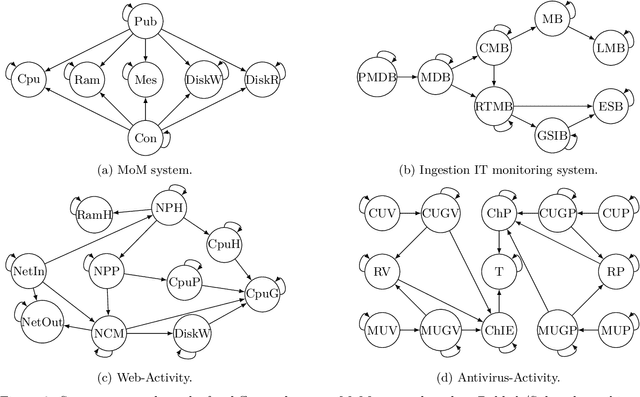Lei Zan
On the Fly Detection of Root Causes from Observed Data with Application to IT Systems
Feb 09, 2024Abstract:This paper introduces a new structural causal model tailored for representing threshold-based IT systems and presents a new algorithm designed to rapidly detect root causes of anomalies in such systems. When root causes are not causally related, the method is proven to be correct; while an extension is proposed based on the intervention of an agent to relax this assumption. Our algorithm and its agent-based extension leverage causal discovery from offline data and engage in subgraph traversal when encountering new anomalies in online data. Our extensive experiments demonstrate the superior performance of our methods, even when applied to data generated from alternative structural causal models or real IT monitoring data.
Case Studies of Causal Discovery from IT Monitoring Time Series
Jul 28, 2023



Abstract:Information technology (IT) systems are vital for modern businesses, handling data storage, communication, and process automation. Monitoring these systems is crucial for their proper functioning and efficiency, as it allows collecting extensive observational time series data for analysis. The interest in causal discovery is growing in IT monitoring systems as knowing causal relations between different components of the IT system helps in reducing downtime, enhancing system performance and identifying root causes of anomalies and incidents. It also allows proactive prediction of future issues through historical data analysis. Despite its potential benefits, applying causal discovery algorithms on IT monitoring data poses challenges, due to the complexity of the data. For instance, IT monitoring data often contains misaligned time series, sleeping time series, timestamp errors and missing values. This paper presents case studies on applying causal discovery algorithms to different IT monitoring datasets, highlighting benefits and ongoing challenges.
Root Cause Identification for Collective Anomalies in Time Series given an Acyclic Summary Causal Graph with Loops
Mar 07, 2023Abstract:This paper presents an approach for identifying the root causes of collective anomalies given observational time series and an acyclic summary causal graph which depicts an abstraction of causal relations present in a dynamic system at its normal regime. The paper first shows how the problem of root cause identification can be divided into many independent subproblems by grouping related anomalies using d-separation. Further, it shows how, under this setting, some root causes can be found directly from the graph and from the time of appearance of anomalies. Finally, it shows, how the rest of the root causes can be found by comparing direct causal effects in the normal and in the anomalous regime. To this end, temporal adaptations of the back-door and the single-door criterions are introduced. Extensive experiments conducted on both simulated and real-world datasets demonstrate the effectiveness of the proposed method.
 Add to Chrome
Add to Chrome Add to Firefox
Add to Firefox Add to Edge
Add to Edge